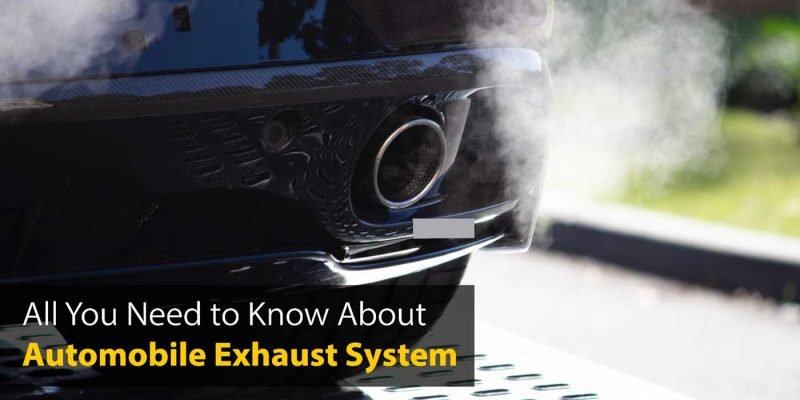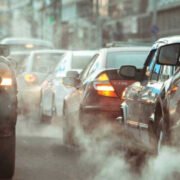The exhaust for cars has a dual function: it reduces both pollution levels and the noise of the car.
Thanks to the many developments in this essential element of vehicle mechanics, it is now possible to drive an efficient vehicle that emits less noise and less toxic pollutants than previous generations of automobiles.
Knowing the functionality of the exhaust system is essential for all motorists, whether they are experienced or just aspiring to the rules of the road.
1. Main Components of the Exhaust System
Here are the main components that make up a vehicle’s exhaust system:
- The exhaust manifold
- The catalytic converter
- The oxygen sensor
- The muffler
- The gaskets
2. What Is the Function of the Exhaust System?
The exhaust system is a recirculation system that redirects all the combustion gases from the engine towards the rear before releasing them outside.
Thus, the exhaust gases cannot penetrate inside the passenger’s cabinet or obstruct the user’s visibility.
Thanks to the muffler, the car’s noise and gases are filtered and absorbed. If the muffler or the exhaust system is faulty, as when it is punctured, it does not go unnoticed as the vehicle becomes much noisier.
Besides, it causes damage to the valves, catalysts, lambda sensor, sparks plugs, and all engine parts.
In principle, the exhaust system must be intact to pass the technical check, which usually takes the form of an anti-pollution check.
3. Exhaust System Failure
When the car emits smoke abnormally, there can be many causes. It can come from an engine malfunction, mechanical failure, and even driving style!
By noticing the color of the smoke, you can get valuable clues as to the source of the problem.
Who has never been alerted to seeing their car smoke abnormally!
The first thing to do is identify the color of the smoke. Sometimes this only happens when driving. So, when you are taking a car for a test drive or selling your car, ask someone to follow you to identify the smoke color.
The smoke color will help you to act accordingly.
Different Smoke Colors Mean Different Problems
- White smoke
When you start your car, more often in the morning, white smoke may come out, which is normal. Condensation forms in the exhaust line and produces water vapor as it heats up.
Seeing white smoke is usual when the car is cold. However, this smoke must clear quickly, or else this is probably a problem.
That is often due to a deteriorated cylinder head gasket. When it becomes permeable, engine oil and coolant can mix, smoke usually appears after a breakdown. Although problems with the electrical system can cause this, it can also occur because of the following failures:
- Faulty spark plugs
- Defective catalytic converter
- Clogged muffler
- Damaged intake manifold
- Dirty carburetor float chamber
- Water in the crankcase
- Blocked oil filter
- Broken timing chain
- Cracked camshaft cover
- Loose piston rings
- Burned pistons
- Piston ring blowout
The white smoke emanation sometimes comes from a faulty injector during acceleration, like an improperly adjusted injection pump.
- Black smoke
In the majority of cases, black smoke means overconsumption.
That is a phenomenon that concerns diesel engines more. Too much diesel or not enough air will interfere with combustion and cause the release of black smoke.
It can also be due to the obstruction of a gas discharge line. The soot transported by the gases passing through it ends up fouling it over time.
For diesel cars, the problem can also come from the lambda sensor. This sensor contributes to the management of the EGR valve and the injection. If it works poorly, it also causes dysfunction in these two, causing black smoke.
- Blue smoke
Although white or black smoke is more common, blue smoke can generally indicate overconsumption of engine oil.
Blue smoke can also come from incomplete combustion of fuel between other things like:
- The valve seals wear out
- The water/oil exchanger malfunctions
- There is a problem with the injection or ignition
However, overconsumption of oil can cause irreversible damage, as the engine is no longer sufficiently lubricated as it should.
- Yellowish-green smoke
Greenish-yellow smoke indicates overheating. That could happen if the thermostat fails, but it’s also possible for other reasons such as:
- A leaky radiator hose
- An open cooling fan
- A defective heater core
- A cracked block
- A bad battery
Whatever type of smoke comes out of the exhaust, if it remains persistent, it is essential to seek the advice of a specialist, so that it does not affect the car value.
However, the driving style can also be the source of black smoke! An engine that rarely revs will tend to clog up by accumulating various soot. Sharp accelerations are essential at times to burn off the deposits that accumulate.
4. Symptoms of the Exhaust System Failure
Due to their location underneath the car, exhaust systems wear fast.
This rust appears from acidic moisture and other debris passing under the vehicle. Water vapor is formed as a by-product in the engine, leaving the exhaust with gases such as CO2.
Water can condense on cool surfaces in the exhaust system, and over time this collects and corrodes small holes inside. And because the exhaust is under the vehicle, it is exposed to a small amount of movement.
The combination of movement and corrosion can cause cracking noises and large holes at the most sensitive points.
Common symptoms are:
- Continuous noise or jerkiness of the engine
- Low fuel/distance efficiency
- Significant exhaust noise
- Rust and holes on the elements of the system
- Reduction in engine power
- Bad smell
- Deterioration of exhaust system components
Some vehicles produce very little or no visible smoke while running. These include electric motors, hybrid systems, hydrogen-powered vehicles, etc.
Some examples of non-smoker vehicles are:
Hybrid Electric Vehicles: Toyota Prius Hybrid, Honda Civic Hybrid, Ford Escape Hybrid, Chevrolet Volt, BMW i3, Nissan Leaf, Tesla Model S, Mitsubishi Outlander PHEV
Plug-in Hybrids: Chevy Spark EV, Kia Soul Plug-in, Renault Zoe, Volkswagen e-Golf, Fisker Karma
The exhaust system is an essential part of the proper functioning of a vehicle. However, it is very vulnerable due to its positioning. Inclement weather and poor traffic conditions can affect this system quickly.
It is essential to take your vehicle to the mechanic at least once a year for exhaust system inspection and necessary repairs.


















Comments